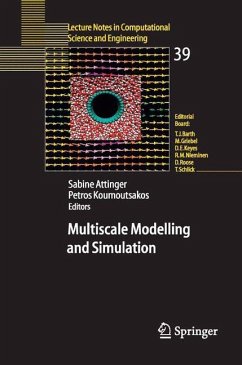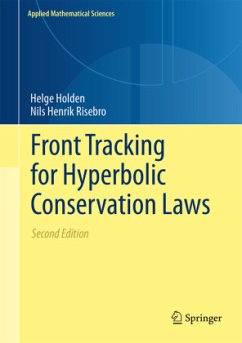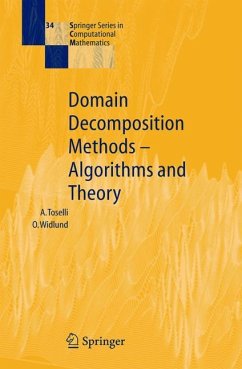
Adaptive Multiscale Schemes for Conservation Laws

PAYBACK Punkte
20 °P sammeln!
The main theme of the book centers around adaptive numerical schemes for conservation laws based on a concept of multiresolution analysis. Efficient algorithms are presented for implementing this program for finite volume schemes on unstructured grids for general systems of multidimensional hyperbolic conservation laws. The efficiency is verified for several realistic numerical test examples. In addition, a rather thorough error analysis is supporting the approach. The monograph covers material ranging from the mathematical theory of conservation laws to the nitty-gritty of hash tables and memory management for an actual implementation. This makes it a self-contained book for both numerical analysts interested in the construction and the theory of adapative finite volume schemes as well as for those looking for a detailed guide on how to design and implement adaptive wavelet based solvers for real world problems. Since modern techniques are presented in an appealing way, the material is also well suited for an advanced course in numerical mathematics.
During the last decade enormous progress has been achieved in the field of computational fluid dynamics. This became possible by the development of robust and high-order accurate numerical algorithms as well as the construc tion of enhanced computer hardware, e. g. , parallel and vector architectures, workstation clusters. All these improvements allow the numerical simulation of real world problems arising for instance in automotive and aviation indus try. Nowadays numerical simulations may be considered as an indispensable tool in the design of engineering devices complementing or avoiding expen sive experiments. In order to obtain qualitatively as well as quantitatively reliable results the complexity of the applications continuously increases due to the demand of resolving more details of the real world configuration as well as taking better physical models into account, e. g. , turbulence, real gas or aeroelasticity. Although the speed and memory of computer hardware are currently doubled approximately every 18 months according to Moore's law, this will not be sufficient to cope with the increasing complexity required by uniform discretizations. The future task will be to optimize the utilization of the available re sources. Therefore new numerical algorithms have to be developed with a computational complexity that can be termed nearly optimal in the sense that storage and computational expense remain proportional to the "inher ent complexity" (a term that will be made clearer later) problem. This leads to adaptive concepts which correspond in a natural way to unstructured grids.














